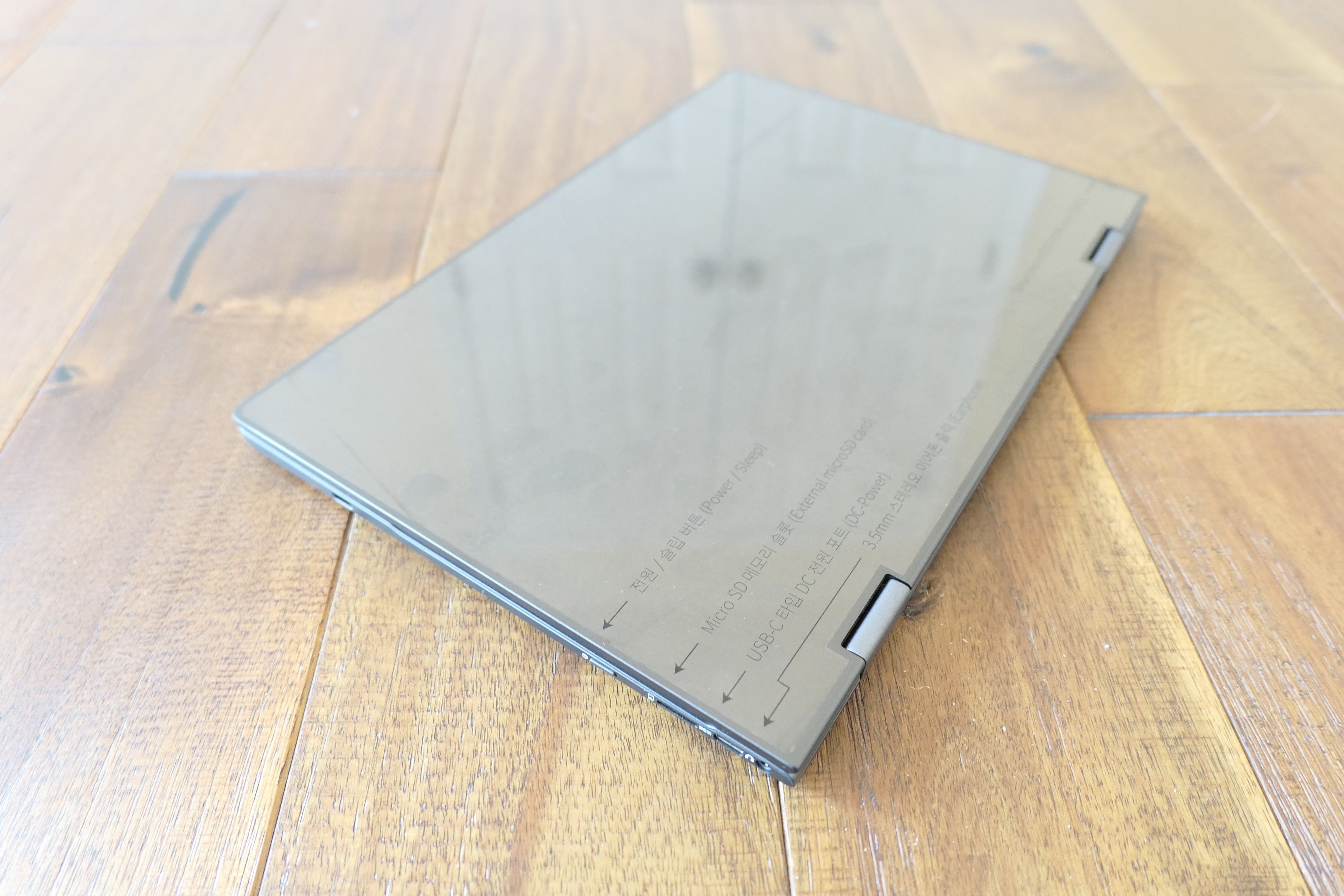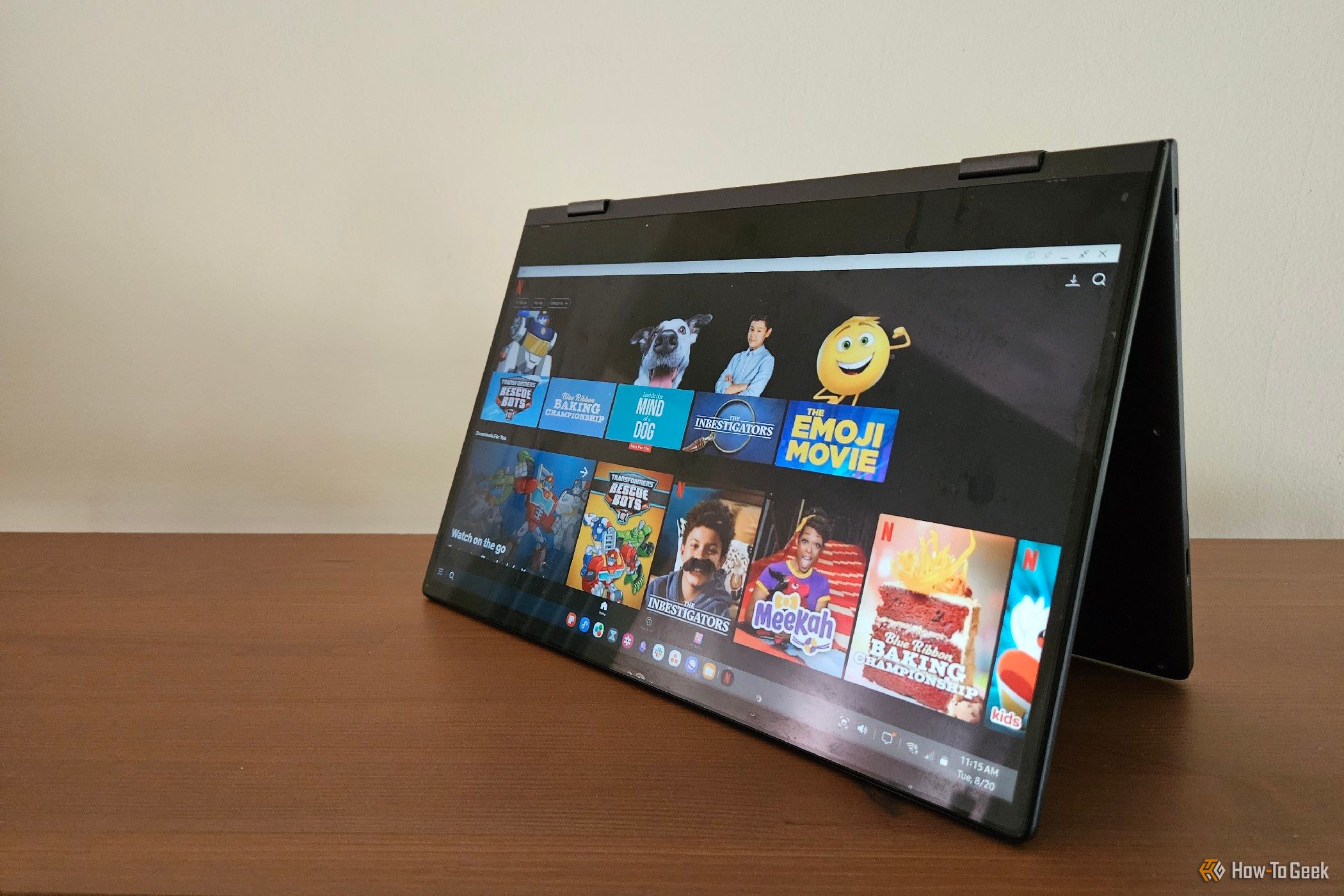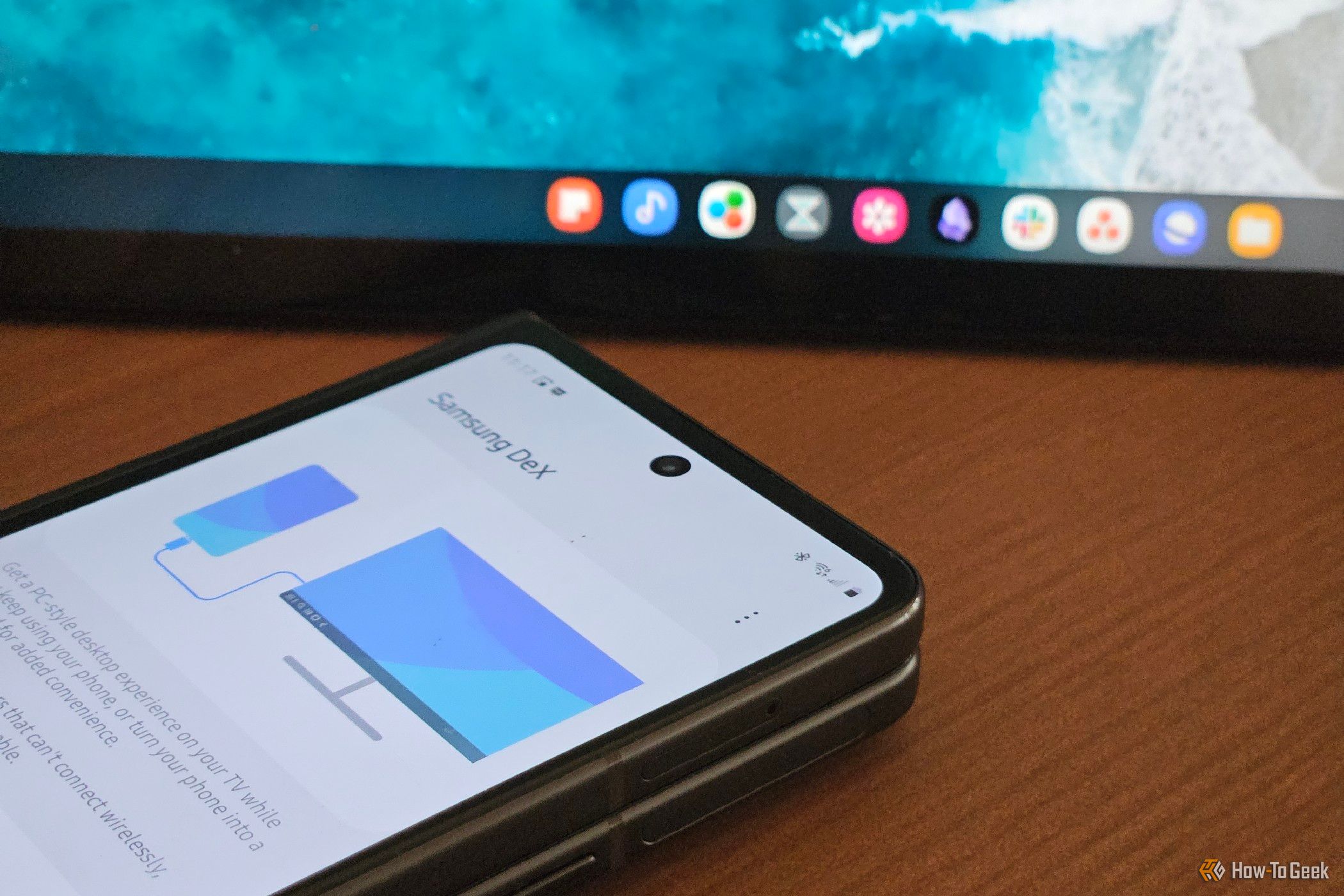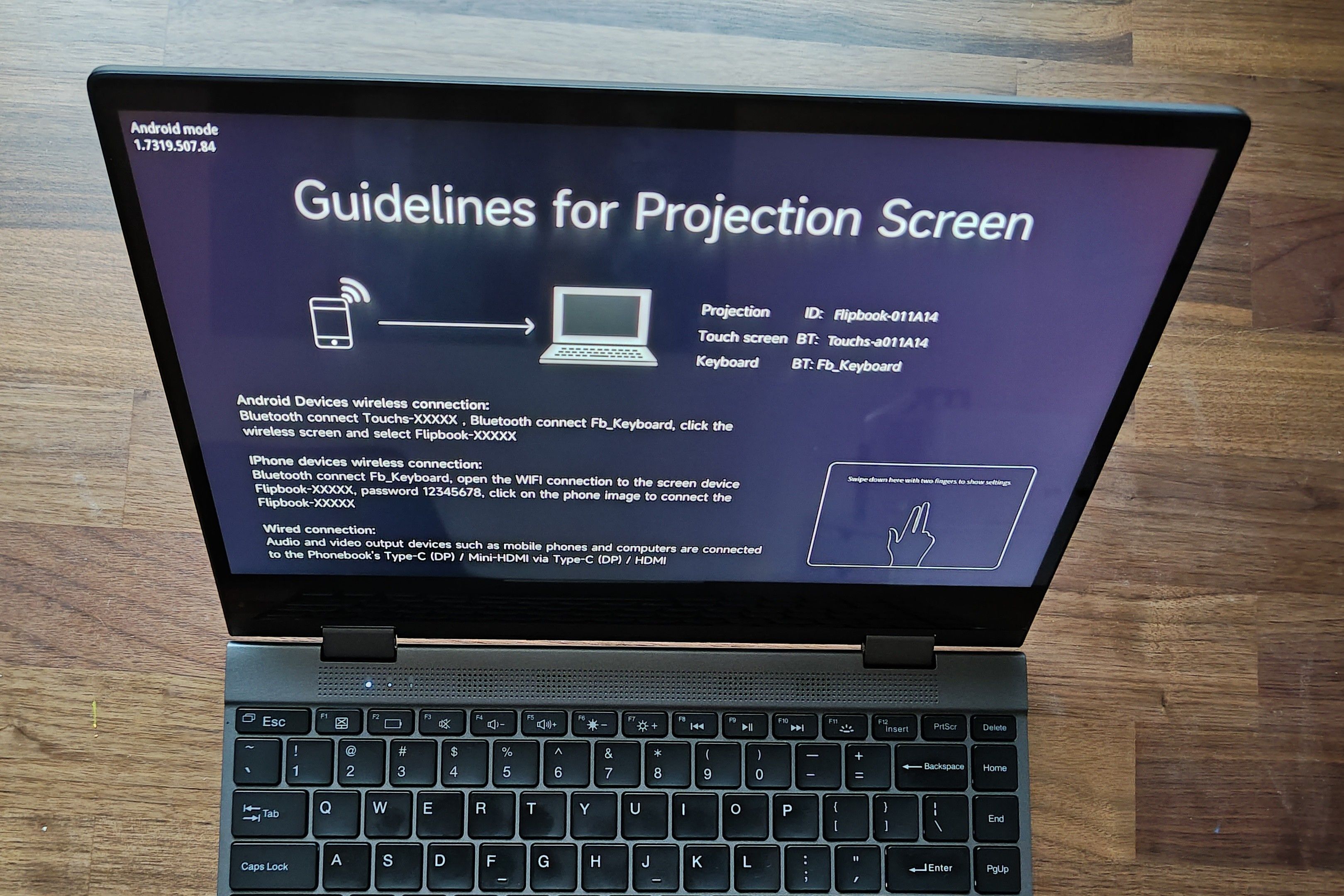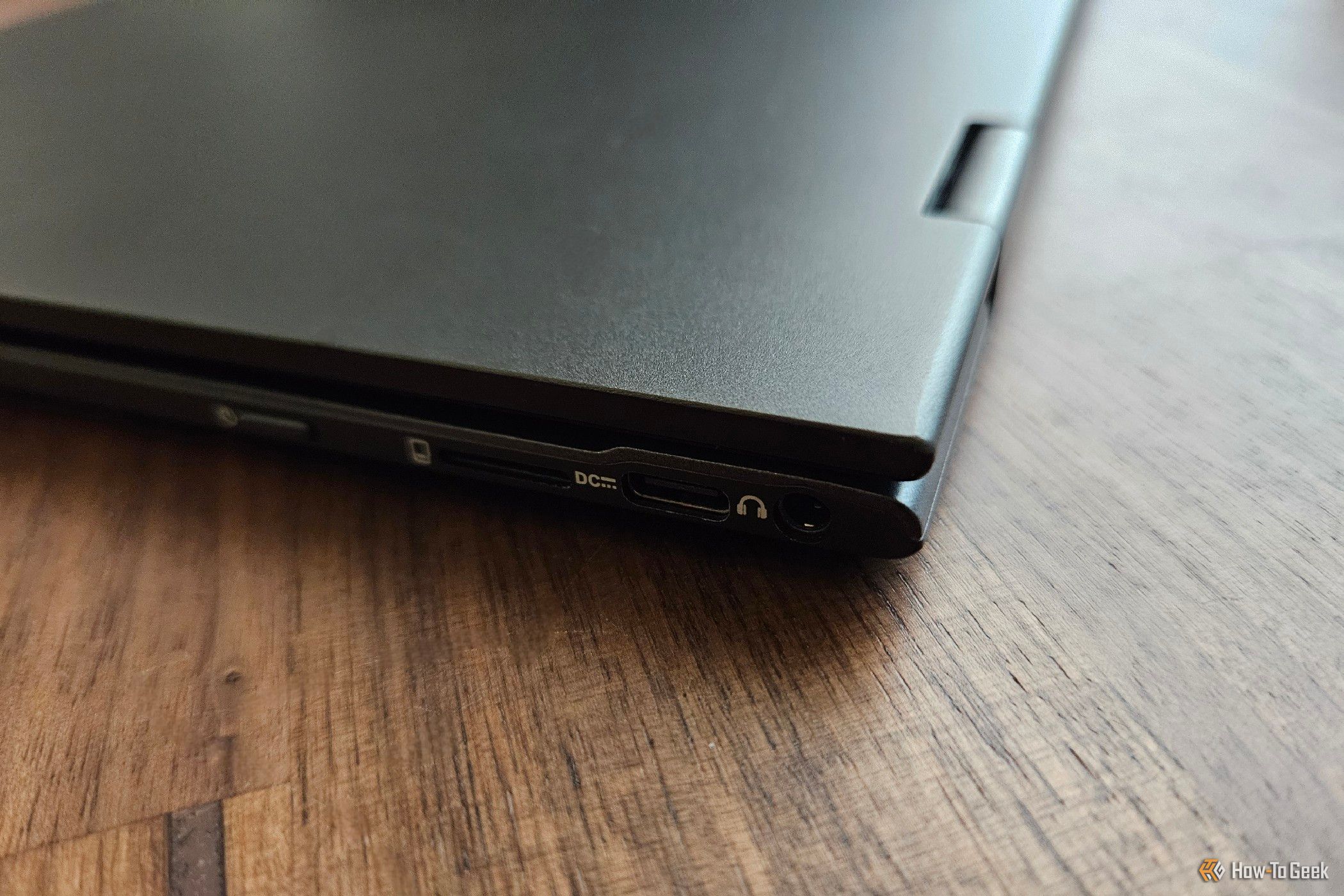Here are two things most Android owners don’t know about their phone: it might have a “desktop mode,” and if it does, there’s a way to turn it into a laptop. After doing this with both a Motorola and a Samsung Galaxy phone, here’s what I’ve learned.
You Need to Buy a Lapdock
When I say I’ve been using my phone as a laptop, I don’t mean I only use my phone (though I often do). Rather, I connect my phone to a device called a “lapdock”, which is a laptop shell that uses your phone as its brains.
NexDock makes perhaps the most well-known lapdock, though mine came from uPerfect instead. The designs are very similar: slim chassis that comes with a touchscreen and folds 360 degrees into tablets. If you ever saw the original Chromebook Pixel, mine looks like a cheaper version of that.
Once you connect a compatible phone to a lapdock (such as a phone with Samsung DeX), a desktop mode appears, and you essentially have the same experience as a high-end Chromebook.
A Wired Connection Is Better Than Wireless
Some lapdocks require a wired connection whereas other support casting a desktop wirelessly. No matter which option you have at your disposal, the wired approach is better if you want the most stable experience.
A wired connection provides a 60Hz refresh rate that, while not as smooth as my phone’s internal screen, is far less jittery than the 30Hz you get over wireless. Wireless connections are also more prone to spontaneously disconnecting, like bad Wi-Fi.
Having a phone sticking out the side of a lapdock is awkward, but the experience is as capable as what you get from a laptop. A wireless connection makes a lapdock feel more like you’re using a regular laptop, but the stutters make it obvious you aren’t.
Wireless Lapdocks Are Good for Video
I wouldn’t say the wireless experience is always a step-down. There’s one use case in particular where it’s better, and that’s watching the video. Fun fact: you actually can’t see the difference when watching most video at 30Hz versus 60Hz, since the standard frame rate for movies is 24 frames per second. With that being the case, you might as well cast the video wirelessly and keep your phone free for second-screen viewing.
This is why Chromecast has been so viable as a media streaming service but not as great when you’re mirroring your phone to your TV. The underlying technology shares the same limitations.
Samsung DeX Is More Mature Than Motorola Smart Connect
Samsung DeX isn’t the only Android-based desktop in town. In the US, the other option comes from Motorola. It’s known as “Smart Connect,” at least right now. The name was previously “Ready For” and has changed a few times, so don’t be surprised if it gets changed again. Outside of the US, Huawei offers a desktop mode as well.
Smart Connect is, in some ways, better than DeX. Rather than launching straight to a desktop, it actually opens a hub that lets you skip straight to TV apps or games, allowing your phone to better serve as a set-top box or game console.
Yet, at the end of the day, Motorola’s desktop is a little bit more prone to bugs and not quite as feature-complete as Samsung’s offering.
Bring a Mouse
Lapdock hardware is not bad, considering what you’re spending (typically under $400). There’s one area where the sacrifice is noticeable, and that’s the touchpad. For starters, the touchpads often feel cheap. To make matters worse, the software for managing the on-screen cursor is managed by the phone, not the lapdock, meaning there’s a disconnect between the people making the software and the hardware that needs to be fine-tuned.
I recommend having a Bluetooth mouse nearby. This quickly eliminates the frustration. Yes, I do mean frustration. I find using a lapdock touchpad not merely less than ideal but an exercise in patience.
Lapdock Batteries Can Die Without Warning
If you don’t have a newer MacBook or a Snapdragon X Windows machine, you’re probably used to keeping an eye on your laptop’s battery. With a lapdock, the battery icon in your system tray is deceiving. It refers to your phone’s remaining battery life. As for how much juice is left in your lapdock? Well, that’s a surprise.
Technically, there’s a way to check. On mine, that involves swiping down in the bottom-right corner to activate the lapdock’s system controls. There’s just no way for Samsung DeX to communicate with the lapdock’s internal systems, which is yet another reminder that you’re using two separate devices.
The Lapdock Can Be an External Battery Bank
Lapdocks offer the ability to function as battery banks, supplying power to your phone while in use. This is great because it enables you to use your phone as a laptop without walking away with a dead phone after. If you have to choose between one and the other, you probably want that extra juice to go toward your phone.
Yet this is a double-edged sword because it makes your lapdock even more prone to turning off without notice. My laptop can feasibly hit five hours of battery life, but not if it’s also powering my phone.
A phone has fewer ports than a laptop. A lapdock offers a chance to get more ports, but it’s not guaranteed to have the ones you need. One advantage of NexDock’s lapdock over mine is that it includes a microSD card slot. That allows you to have extra storage that appears whenever you connect to your lapdock that you might not need when you disconnect and go back to using your phone as only a phone.
My lapdock has a second USB-C port, but that port doesn’t accept flash drives or connect to a USB-C hub. My USB-C hub and phone dock allow me to connect my phone to whatever I want, but I’ve found my lapdock to be far more limiting.
Can anyone replace a laptop with a lapdock? That depends on your workload. If you’ve used a Chromebook and can get by with that just fine, then the odds are in your favor. In both cases, you have access to a full-featured web browser and countless Android apps. But if you need software that a Chromebook can’t handle, Samsung DeX isn’t going to offer you better options (aside from Samsung’s exclusive apps).
Still, that means there are a whole bunch of people out there who can feasibly get by with just their phones. It’s worth keeping an eye on both Android desktops and lapdocks to see how they mature. Your next laptop might be no laptop at all.


